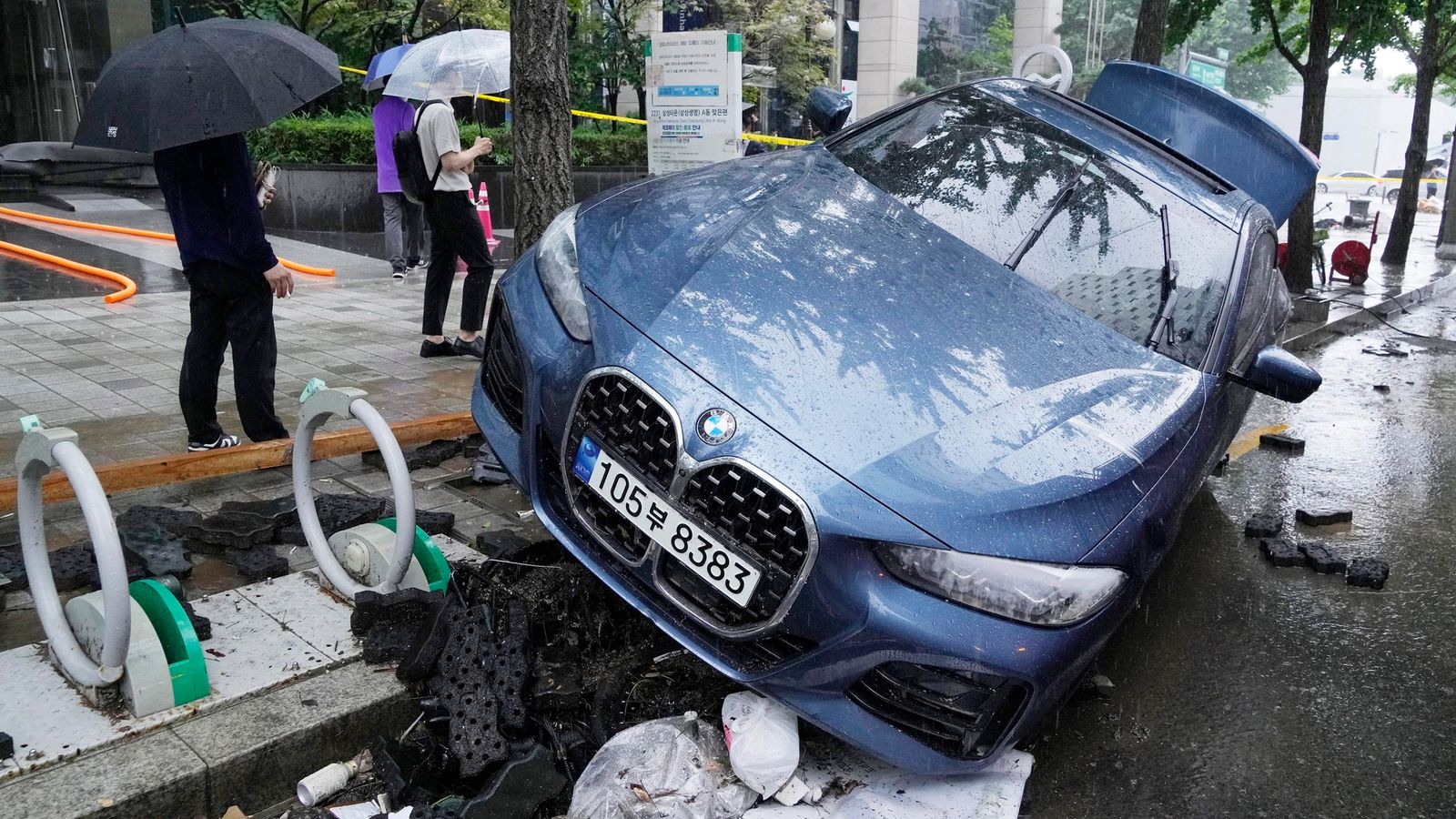At least eight people have died after heavy rain hit South Korea’s capital – flooding homes, roads and subway stations.
The rainfall turned the streets of Seoul’s affluent Gangnam district into rivers.
People were seen wading through thigh-high waters in the area – one of Seoul’s most bustling business and leisure districts.
Around 17 inches (43cm) of rainfall was recorded in Seoul’s hardest-hit Dongjak district from Monday to midday on Tuesday.
More than 5.5 inches of rain fell per hour (14cm per hour) at one point on Monday night – the highest hourly downpour measured in the capital since 1942.
President Yoon Suk-yeol urged public employers and private companies to adjust their commuting hours as people slowly returned to work on Tuesday morning.
He also called for quicker action in restoring damaged facilities and evacuating people in dangerous areas to prevent further deaths.
The country’s defence ministry said the military was prepared to deploy troops to help with recovery efforts if requested by cities or regional governments.
The torrential downpours began on Monday morning and intensified through the day into the late evening.
Around 800 buildings in Seoul and nearby cities were damaged, while at least 790 people were forced to flee their homes, the interior and safety ministry said.
In the nearby city of Seongnam, a rain-weakened hillside collapsed on to a university football field.
“The heavy rainfall is expected to continue for days… we need to maintain our sense of alert and respond with all-out effort,” said Mr Yoon.
Rainstorms also hit North Korea, where authorities issued heavy rain warnings for the southern and western parts of the country.
The North’s official Rodong Sinmun newspaper described the rain as potentially “disastrous” and called for measures to protect farmland and prevent flooding on the Taedong river, which flows through the capital, Pyongyang.






